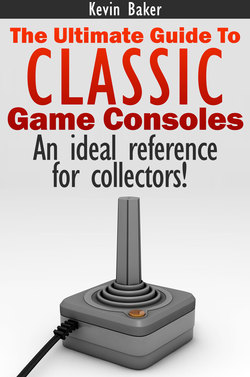Читать книгу The Ultimate Guide to Classic Game Consoles - Kevin Baker - Страница 19
На сайте Литреса книга снята с продажи.
17 – The Great Video Game Crash Of 1983
ОглавлениеThere have been many generations of consoles, but sometime during the second generation, a worldwide event happened that brought the entire market to a halt. It was the Great Video Game Crash of 1983.
Back then, the Atari 2600 was still a bestseller, and most people thought of gaming as something you would normally do in an arcade. Pac-Man Fever was the top game in town and people saw video games as the future of entertainment. But then, everything started to go wrong. There were dozens of gaming companies going out of business, and new games got canceled en masse. For almost two years, it was as if a major recession had hit the country, except that it was mostly focused on the video game industry.
Everything started with Atari, and some of the decisions that they made which led to multiple outcomes, bringing in a crash like the gaming industry had not seen before. First, an argument started out between the company and game developers because of Atari's practice to not give any kind of credit or royalties for their work, which led to many going off and finding work elsewhere, or forming their own companies. The most well known became Activision. Atari went to court and tried to prevent these new companies from making cartridges, a case they eventually lost. The company's business plan was also part of the problem, where they sold consoles at a very cheap price and hoped to recoup the costs with game sales, but with new companies in the market, game sales could not bring in enough profits for this strategy to last for long. Then, Atari suffered a lot of failed launches in the early 80s, like a redesigned version of Pac-Man and a poor implementation of E.T.
Atari's sales in the video game crash of 1983 plummeted by 97%.
It all culminated during the 1982 Holidays when Atari suffered a big loss in profits, followed by a scandal where Atari's President sold his shares of the company less than an hour before making that announcement. With half a billion in losses by the end of 1983, it seemed as if Atari was on the way out, and the large number of new companies trying to take their place only led to confusion in the market, people having no way to find the good names from the bad ones. These overnight brands started going out of business as games were left unsold on shelves.
The US video games market went from $3 billion in 1982 to $100 million in 1985. Ironically, it was Nintendo's iron grip on a new type of cartridge that helped revive the industry. Since no one could copy their system, it allowed the company to ensure games for their Famicom console were of higher quality, and would not suffer from what happened to Atari. In 1985, they rebranded that console into the NES and used the weakened US console market to gain an almost complete monopoly. Their brand new console reached US shores, and the greatest crash in video game history was over.
